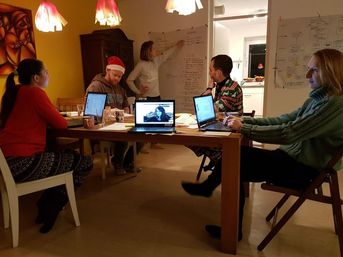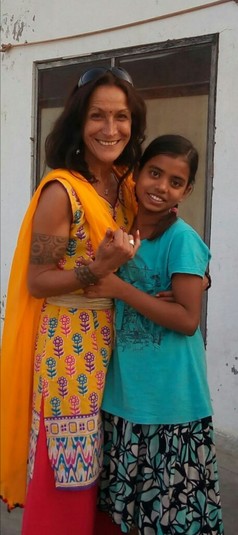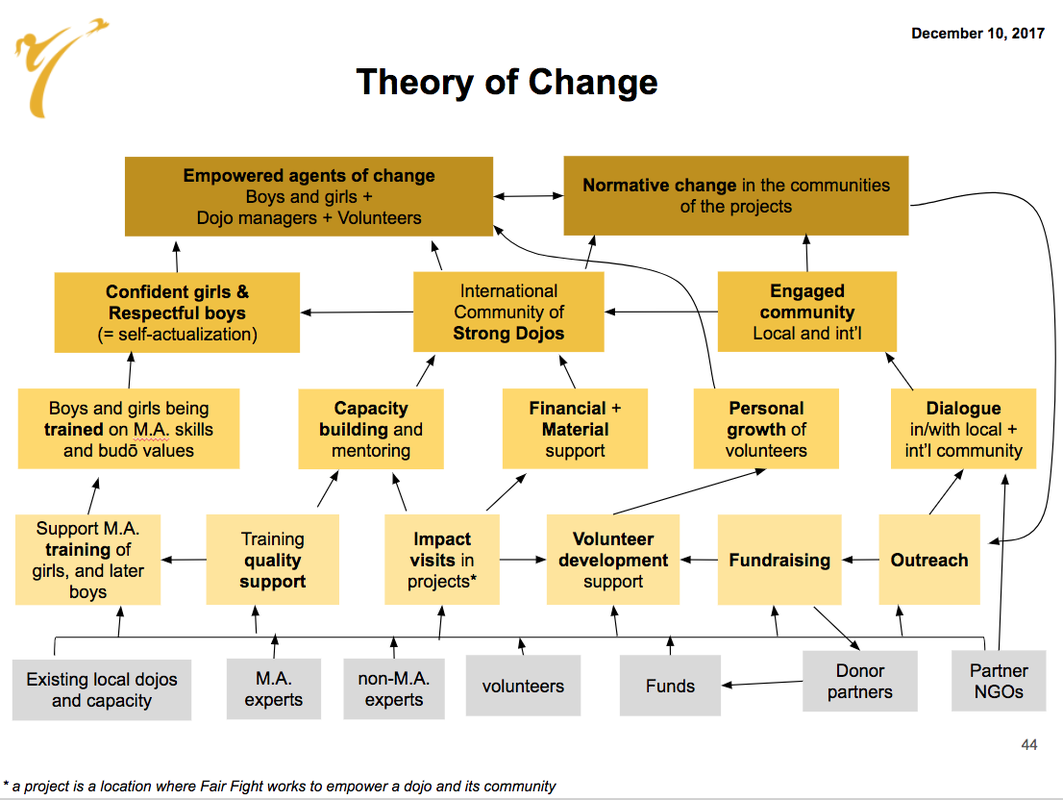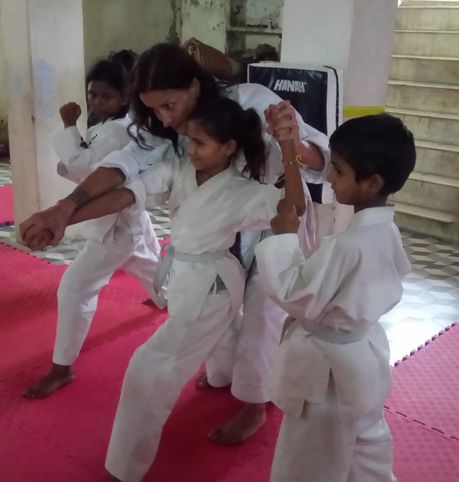 It’s December here in Rotterdam and winter has brought with it beautiful snowfall, a phenomenon which has been conspicuously absent in the winters of late. Sitting inside watching the snowflakes descend upon the suburban surroundings brought back the familiar feeling of coziness and plunged my mind into deep thought. It was most certainly the perfect moment for reflection. Thinking back on 2017 there is much to be proud about regarding Fair Fight. We brought sensei Gerald Muusha to the Netherlands for cross-training and sharing of his story with our community of volunteers, supporters and partners. We undertook our second trip to Varanasi, India to further the project there with the invaluable support of Heifara. We bought a tatami for the girls at Nagle House in Marondera and successfully had it delivered and installed at the school improving the facilities. The Fair Fight board expanded with a new outreach officer. The Tang Soo Do (TSD) European championships saw a very successful fundraiser for Fair Fight. All this in 2017! Indeed we have come a long way from the Fair Fight we established back in 2015. But with rapid growth and many new developments it was time take a look in the mirror and check to see whether we were still on course to fulfilling our original mission. Were we staying true to the values and goals we had set out for ourselves almost three years ago? The truth is that Fair Fight has been extremely busy building new projects and furthering our existing efforts on the ground in India and Zimbabwe that we have had little time to reflect upon our core vision. Something which brought about a subconscious unease throughout the organization, ever present at board meetings, but never really spoken out loud. We knew we had to go back to the drawing board, to the core fundament of the charity, to be in a more powerful position from which to build further. So it was then when we started to ask ourselves, “What exactly do we mean by empowerment? What were the fundamental paradigms which we wanted to influence through our work?” Answers didn’t come easily and after numerous meetings which circled back to the same difficulties we decided to get some external help. We were fortunate enough to come into contact with Nienke Keen, a Theory of Change expert and researcher. Nienke offered to help us apply the Theory of Change methodology to Fair Fight so that we could gain clarity on what exactly we wanted to achieve. The “Theory of Change” methodology can be considered like a 'business case' for not-for-profit organisations. It essentially helps organisations to make sense of their higher level goals and offers practical insights to these organisations on how to generate change which is explicit, actionable, and measurable. After three successive workshops in which Nienke helped us develop our own Theory of Change we are highly satisfied with the result (see image below). However the journey has been just as invaluable as the end result. We were also very much confronted during the different phases in developing our Theory of Change: we realized that we did not always have a good fit between our actions and ambitions; we found disparities between what we thought we were doing and what we actually should have been doing; we identified relevant stakeholder groups that we had previously neglected. In short, the structured approach to thinking about Fair Fight and our activities helped us to get a different perspective on our purpose, our WHY, we can now build a stronger and more focussed strategy for Fair Fight.
Are you curious about the Theory of Change methodology and what impact it could have for your organization? Check out Nienke's website Keen for Impact to learn more and book your own personal workshop today.
1 Comment
 When our team went to Varanasi in January 2017, they were welcomed by then-AshaDiya coordinator Shiva, who had taken over from Meera at the end of Summer 2016. However, for health reasons, Shiva returned to his home town of Chennai, leaving his position open. In March 2017, our French partner organization Act & Help hired Heifara Danielsson for the post. It is difficult to give an adequate representation of Heifara’s background and history, which could form the basis of a novel, in the space of a blog post. Although Heifara holds a French passport, she is actually from Tahiti, with German and Polish heritage. She has a very broad background in history, pedagogy and law, compounded with training as a meditation, fitness and karate instructor. She has divided her professional time between teaching from kindergarten all the way to university, social work, and fitness, meditation and martial arts work. Heifara began her martial arts training at the age of six under the tutelage of a most peculiar professor whose methods were somewhat medieval and fate was similar to that of Amelia Eckhart. After the disappearance of her first eccentric teacher, she transferred to her life-long Sensei, “Patrick”, whose only students were Heifara and her former husband. His methods were very much centred on the traditional teaching and learning of martial arts, with a strong emphasis on Budo and not much care for competition and medals. Although Heifara also holds a first Dan in Kendo and is versed in fitness and meditation, she calls Shotokan Karate, in which she holds a second Dan, the “true love of her life”. She passed the federal and national exams that allowed her to set up her own club in Tahiti, at which she taught more than 100 students with her former husband. Heifara also spent some time in France, during which she preferred to teach a small select group of students in a manner resembling more the master-student bond exercised by Chinese kung fu masters than the large groups of modern dojos. When we heard of Heifara’s hiring, we were ecstatic. Our #1 challenge with the India project is and has always been building local teacher capacity in a context where only regular supervision and monitoring can work, yet we could not send volunteers to Varanasi for entire months at a time! When we heard of Heifara’s martial arts background and her approach to Budo, we instantly knew she was the person the girls needed. Despite her hectic schedule and the demands of running both Asha and Disha, she stepped in in the summer of 2017 to correct the course that the classes had taken. The girls were steered away from competition and back to the basic principles that make martial arts so empowering. In Japanese, these principles are known as “Budo” and exact definitions vary, but core principles include humility, honour, sincerity, courage, respect and harmony, among others. Heifara set about educating the girls in these core principles, reducing the amount of hours that they were taught karate, but increasing their drive for self-practice and their core understanding of the discipline. She has also been spending considerable time with Devesh, helping him to discover that an entire World lies beyond sports karate. Asked about the situation of women in Varanasi, Heifara, as usual measured in all things, gave a reasoned and balanced answer. She believes that women here are not disempowered per se, not much more than Western women who are also victims of certain expected behaviours and attitudes (such as clothing and make-up). But social class and economic wealth play a determinant role in the fate of women in Varansi, more so than in countries with a redistribution system. As such, women with little access to wealth also have little access to education, family planning and jobs (other than cooking and cleaning). They are also held back by a system which requires that they marry at a high cost for their families, though on a case-by-case basis Heifara has met local men who are extremely proud of their daughters. Change must happen on three levels: on a societal level, at the cultural-mental level and at the level of individual strength and determination. Heifara believes that martial arts can act on the latter. She also believes that this is where both Ashadiya and FairFight are most effective in their joint efforts. She says that while this may be conceptually self-evident, it is difficult to put into practice.
Though we have been in close contact with Heifara via WhatsApp and Skype calls, we have yet to meet her in person. This makes the encounter with the team that is leaving for India in January 2018 all the more exciting! We look forward to sharing a progress report of our project with you in the near future. |
Archives
June 2022
Categories |



 RSS Feed
RSS Feed
